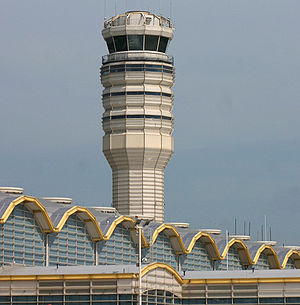Category Archives: Uncategorized
January 2, 2014
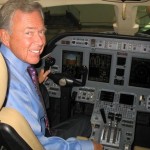
Wichita Aero Club Trophy Will Be Presented to Cessna Chairman Emeritus Russ Meyer!
Fourth annual award will be presented at Annual Gala on January 25, 2014.
Wichita, KS, October 22, 2013: The Wichita Aero Club announced today that the fourth annual Wichita Aero Club Trophy will be presented to former Cessna Aircraft Company Chairman Russell W. Meyer, Jr. Mr. Meyer was selected by the Club’s Selection Committee from among fifteen nominees. The WAC Trophy will be presented at the Wichita Aero Club’s annual Trophy Gala at the Doubletree Hilton Wichita Airport on the evening of Saturday, January 25, 2014.
“The selection of Russ Meyer for this award surprises no one,” noted Dave Franson, Wichita Aero Club President. “Russ’s contributions to the aviation industry and to the local community are so numerous and so extensive that it would take a book just to list them. He is, without question, a great choice for the Wichita Aero Club Trophy,” he added.
The citation which accompanied the nomination read:
During his more than 25 years as CEO of Cessna Aircraft, Russ Meyer not only led the company to pre-eminence in the global business jet industry, but his industry leadership has been proclaimed as the most far-reaching and effective in the history of general aviation.
For nearly 40 years Russ Meyer has been “the face” of Wichita’s heralded general aviation industry… and for very good reason. Under his tutelage Cessna Aircraft designed, developed, built and delivered more business jet aircraft, worldwide, than any other global manufacturer. Perhaps even more significantly, his community and industry achievements speak for themselves. Examples: (1) His innovative initiative to establish a training facility on East 21st street for unskilled workers led to jobs and hope for hundreds of Wichitans and their families. (2) His tireless efforts were instrumental in leading to Congress’ enactment of the General Aviation Revitalization Act of 1994, which after a decade, re-opened the doors for aircraft manufacturers to effectively produce single engine aircraft, again, creating hundreds of new area jobs.
Mr. Meyer’s well-deserved national awards include: the Wright Brothers Memorial Trophy, the Collier Trophy (twice, once jointly with Cessna), and election to the National Aviation Hall of Fame. A 14,000+ hour pilot, he is type rated in all Cessna products.
A graduate of Yale and Harvard Law School, Mr. Meyer served as a Marine Corps jet fighter pilot from 1958 – 1961, practiced law in Cleveland for five years, then served as CEO of Grumman American Aviation Corporation from 1966 – 1974, before joining Cessna in 1974, rising to chairman/CEO the following year. He is also the only executive to serve as Chairman of the General Aviation Manufacturers Associaiton (GAMA) three times.
He was elected into the Kansas Aviation Hall of Fame in 1996 and was named Kansan of the Year in 1998. Mr. Meyer and his wife, Helen, have been among Wichita’s most generous philanthropists, leading and donating to causes supporting underprivileged children, education and the arts.
”We are extremely pleased to honor Russ Meyer in this way. He actually received multiple nominations for the WAC Trophy. As one of the nominations said, ‘There is no one in the history of Kansas aviation who has achieved as much for aviation and the community as has Russ Meyer. ’ We know this is one of many awards Russ has received during his extraordinary career, but we’re still looking forward to an exciting and enjoyable event in January when he is officially presented with this recognition from his many friends and neighbors in the Air Capital, ” Franson added.
The Wichita Aero Club was established in 2008 to foster and promote interest in aviation, provide a forum focused on the industry’s issues and achievements and bring together those with a passion for flight in an environment that expands and enhances professional relationships and furthers cooperation and understanding.
The WAC Trophy is awarded annually to a living person, group, or existing organization with a strong relationship to the greater Wichita area, who have distinguished him, her or themselves in the field of aviation or aerospace within the most recent calendar year or during a cumulative career of significant achievements and contributions. For more information on the Wichita Aero Club, the January 25 Gala or other Wichita Aero Club events, call 316-681-4491 or visit the WAC website at www.wichitaaeroclub.org.
Partial Summary of Russ Meyer’s Career:
Chairman, CEO and President of Cessna from 1975-2003
Named Cessna Chairman Emeritus in 2005
Chairman of the Board of the General Aviation Manufacturers Association (GAMA) in 1974, 1982 and 1994
Chairman of the FAA’s Management Advisory Council from 2005-2008
Awarded the Collier Award twice, once in 1986 and again in 1996
Awarded the Meritorious Service Award from the National Business Aviation Association (NBAA) in 1995
Awarded the Wright Brothers Memorial Trophy in 1995
Awarded the George S. Dively Award for Corporate Public Initiative from Harvard
University for creating Cessna’s 21st Street Training Program in Wichita
Led passage of the 1994 General Aviation Revitalization Ace (GARA) that limited aircraft liability
Originated the Citation Special Olympics Airlift where Citation owners transported athletes to the National Special Olympics games
Inducted into the Kansas Aviation Hall of Fame in 1996
Named “Kansan of the Year” in 1998
Inducted into the National Aviation Hall of Fame in 2009
December 5, 2013
And then there were none. As the legislative calendar on Capitol Hill began to move to the right last month, the two Senators who had been invited to serve on the Wichita Aero Club’s ON AIR SUMMIT on December 16 contacted the WAC office to offer their regrets and say they wouldn’t be able to participate. Then Congressman Mike Pompeo’s Chief of Staff voiced a strong concern that the Kansas Fourth District Representative wouldn’t be able to attend, either. When that was confirmed the next day, that left only the head of the House General Aviation Caucus, Representative Sam Graves from Missouri. He held on until it became obvious that both houses of the United States Congress would be extending their schedules to be in session on Monday, December 16, 2013. And then there were none.
Regrettably, the extension of the Congressional sessions has forced the Wichita Aero Club to revise its plan to how the elected officials at it’s annual On-Air Summit at the Doubletree by Hilton Hotel at Wichita Airport. Instead, thanks to some eleventh hour flexibility on their part, three representatives from aviation suppliers agreed to make up the panel. Daniel McCoy, Aviation Reporter for the Wichita Business Journal will continue as the moderator of the discussion.
First sequestration and the government shutdown threatened to extend the legislative calendars in the US House and Senate…and then the problems with Obamacare created a host of unanticipated hearings and a flurry of legislation that dashed virtually any hope of seeing the Congress end its current session before December 16–the date of our ON-AIR SUMMIT. The panel, which had taken months to put together, fell victim to unpredictable circumstances. It became obvious that we were not going to be able to proceed with our plans to discuss key issues with members of the Senate and House General Aviation caucuses. While it’s very disappointing to all of us, including members who had already reserved seats for the ON-AIR SUMMIT, there is some good news, too.
We have put together a revised program that will be both interesting and informative. It will be an opportunity to hear from leaders of the companies that supply many of the components and systems used by the industry’s OEMs. We’ve heard from the senior execs of those OEMs in past ON-AIR SUMMITS so now we’ll have the chance to hear about the unique set of challenges and regulations their suppliers face and how they deal with them. Their performance definitely influences the efficiency and success of the airframe manufacturers they serve.
Making up the panel for the Supplier panel will be:
Woody Cottner, founder and vice president of engineering for Global Aviation Technologies, a Wichita-based engineering, consulting and manufacturing operation that provides aircraft owners and operators with component and avionics upgrades;
Jason Cox, Chief Technical Officer for Cox Machine, Inc., a long-time, family-owned provider of machined and fabricated parts and assemblies for the aerospace industry;
Rod Wilson, President of Air Capital Interiors which offers services ranging from complete aircraft interior refurbishments with custom designs and materials to simpler furniture and upholstery repairs.
All of these panelists are industry veterans who deal with diverse customers and concerns. They cover a broad spectrum of the general aviation industry and can offer perspectives from the other side of the supply and demand equation when compared to those of the OEM CEOs from whom we heard last year.
The Wichita Aero Club will honor existing reservations for the December 16 luncheon that were made in anticipation of the ON-AIR SUMMIT. Those wishing to change their plans or get more information on the new program can connect on-line to the Aero Club’s website at www.wichitaaeroclub.org or call 681-4471. Reservations and information can also be obtained by emailing info@wichitaaeroclub.org. The cost to attend the luncheon is $30 for members and $40 for non-members.
August 29, 2013
In Wichita, Kansas, we tend to take exception to being called “Fly Over Country.” Unfortunately, the entire middle of the country is often considered just the space between destinations. Contrails crisscross the skies above the Great Plains everyday. It has even been said that “Wichita” is an Indian word that means “hard to get to by airlines!” But, those of us who live and work here are quick to point out that most of the American-made airplanes making those contrails probably made their first takeoffs and landings in Wichita! For more than 100 years, airplanes have been flying over this state and for most of that time, they’ve been manufactured here, too. Thanks to companies like Beechcraft, Boeing, Bombardier Learjet, Cessna and their predecessors, TravelAir and Stearman, more than 300,000 airplanes have been built in what has come to be known as the “Air Capital of the World.” That’s more than any place else on earth–by a wide margin!
Recent developments have raised the question of whether Wichita should continue its claim to the “Air Capital” title. Boeing is nearing completion of its exodus from the city, announced in 2012, after 83 years. Hawker Beechcraft also filed for Chapter 11 bankruptcy in 2012, emerging in 2013 as Beechcraft Corporation, a smaller company with no jet production. Cessna and Bombardier Learjet streamlined their workforces over the past five years as orders for their airplanes and production rates declined. They’ve continued to invest in the development of new models, but their scheduled introductions have been impacted by a marketplace for light and mid-size jets that remains tentative. Even Spirit AeroSystems, which had defied the aerospace industry downturn and even increased production rates on several lines, has been forced to take significant write-offs and has laid off workers in recent months. Now, it’s pursuing divestiture of some of its programs. Working capital in the “Air Capital” is becoming more difficult to come by.
But, those factors aren’t enough to overshadow the rich history and exceptional role Wichita continues to play in the global aerospace business. Consider this:
Wichita still builds more airplanes than anywhere else in the world. We’re one of five “clusters” in the aerospace industry–Seattle, Montreal, Toulouse, France, and Dallas-Fort Worth are the others–and we still produce more airplanes than they do–combined!
Kansas’ aviation industry has a $7 billion impact on the national economy. Local manufacturers exported more than half of their production to international customers in recent years, resulting in a strong positive contribution to the nation’s balance of trade.
Kansas aircraft manufacturers shipped more than 500 airplanes worth more than $4 billion dollars in 2012.
As if that isn’t enough, Wichita continues to be the world leader in a number of other key areas:
The Wichita-based National Institute for Aviation Research and the National Center for Aviation Training are both world-class, industry-leading sites with exceptional reputations, resources, leadership and results.
The city possesses an unparalleled number of experienced, highly-trained, aviation-savvy machinists, technicians, engineers, and administrators. As a result, it’s where aviation companies not based in Kansas come to recruit workers.
With Airbus, Beechcraft, Bombardier Learjet, Cessna, and Spirit AeroSystems all resident in the community, Wichita is also home to an aerospace supplier base that numbers more than 130 companies. They currently work with airframe manufacturers based in Wichita and around the world.
Wichita State University’s College of Engineering ranks among the world’s foremost producers of aeronautical engineers.
With a century of aircraft production as part of its heritage and an exceptional manufacturing, supplier and educational base, Wichita will likely be the unrivaled Air Capital for a long time to come, even if it is located in the heart of Fly Over Country!
June 4, 2013
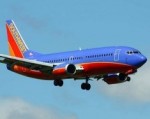
Southwest Airlines, the world’s most profitable and proficient airline, has inaugurated service to Wichita, Kansas…and the Air Capital of the World couldn’t be more enthusiastic. With fivedaily flights (2 to Dallas Love Field, 2 to Chicago Midway, and one to Las Vegas), Southwest has given Wichita travelers more than 500 itineraries from which to choose along its vas
t national network. The three Air Tran Airways daily flights to Atlanta that Southwest has replaced offered 180 different destinations. Southwest also flies 143-seat Boeing 737s–their fuselages are manufactured in Wichita by Spirit AeroSystems–with compared to the 117 seat Boeing 717s previously flown by Air Tran, so the number of available passenger spaces has been increased by a factor of two each day, as well.
Not only does Southwest offer exceptional service, it doesn’t charge for bags, special seating, or even change fees when fliers find their plans need to be modified to take a different flight. That’s bound to be a big plus for business and leisure travelers, alike. It also makes Wichita the departure and return location of choice among thousands of Kansans who have previously traveled to Kansas City, Missouri or Oklahoma City, Oklahoma to take advantage of Southwest’s network and pricing. As Ron Ricks, Executive Vice President for the airline said at the June 3 Wichita Aero Club luncheon following the opening of service to Wichita, SWA’s entry into Wichita means more low fares to more destinations but, “we’re counting on [the local traveling population] to act in your self-interest. If Southwest isn’t in the market, you’ll pay higher air fare. If you buy, we’ll fly, if you don’t, we won’t!”
Southwest is a great partner for Wichita and should be a great asset to the community and the state. It’s the only one of the country’s five largest airlines that hasn’t gone through bankruptcy. It’s the only one to have 40 consecutive years of profits, and the only one not to have across-the-board employee furloughs or cuts to employee benefits or wages. It’s also the only airline to have an investment-grade credit rating and it consistently scores at or near the top in customer-service rankings. It’s no wonder Wichita has worked for most of the past three decades to attract Southwest Airlines to serve this community. Now, it’s up to all of us who fly to keep them here!
May 23, 2013
 Ron Ricks has been with Herb Kelleher at Southwest Airlines since the beginning…or awfully close to it! As a result, he probably knows more about the airline than anyone besides Herb. Southwest will begin service in Wichita on June 2–one day before Mr. Ricks addresses the Wichita Aero Club Luncheon at the Hilton Doubletree Hotel on Monday, June 3. Not only will the event be an extension of the “celebration” of Southwest’s service inauguration, it’s likely to be one of the most interesting presentations of the year.
Ron Ricks has been with Herb Kelleher at Southwest Airlines since the beginning…or awfully close to it! As a result, he probably knows more about the airline than anyone besides Herb. Southwest will begin service in Wichita on June 2–one day before Mr. Ricks addresses the Wichita Aero Club Luncheon at the Hilton Doubletree Hotel on Monday, June 3. Not only will the event be an extension of the “celebration” of Southwest’s service inauguration, it’s likely to be one of the most interesting presentations of the year.
Mr. Ricks is the Executive Vice President—Chief Legal and Regulatory Officer at Southwest Airlines in Dallas, Texas. Before joining Southwest Airlines, he was a partner in the San Antonio law firm founded by Herb Kelleher, where Ron worked extensively on the Southwest Airlines’ account. All together, Ron has represented Southwest since 1981.
His current responsibilities include oversight of the following corporate departments: General Counsel (Legal); Properties (corporate
real estate and airport relationships); and Governmental and Public Affairs; In addition, Ron is closely involved with all aspects of labor law issues as they pertain to Southwest’s relationships with its largely unionized work force.
As Chief Legal and Regulatory Officer, Ron serves as a liaison to Southwest’s Board of Directors with respect to the corporate governance, legal, and regulatory compliance aspects of the Board’s duties.
Presently, Ron serves on the Advisory Committee to the Center for Advanced Aviation System Development at the MITRE Corporation which leads the research and development effort on behalf of the federal government to modernize the nation’s air traffic control system. He also is a member of the Hospital Advisory Board for Methodist Dallas Medical Center, which was founded in 1927 and today is one of the largest medical facilities in the Dallas Metropolitan area.
A graduate of the University of Texas at Austin, he earned a law degree from George Washington University, in Washington, D.C.
The Wichita Aero Club was established in 2008 to foster and promote interest in aviation, provide a forum focused on the industry’s issues and achievements and bring together those with a passion for flight in an environment that expands and enhances professional relationships and furthers cooperation and understanding.
WAC Luncheons are available for $40 for non-members and $30 for members. Reservations can be made on line at the Aero Club’s website, www.wichitaaeroclub.org , or by callingl 316-681-4471.
March 4, 2013
One characteristic of government is that it seldom opts for clear communication when confusion and obfuscation are available options. Take “sequestration,” for example. It’s a heretofore relatively unheard word–and still would be–had the White House not proposed it as leverage to force Congress to compromise dealing with the nation’s fiscal irresponsibility. When Democrats proved even more stubborn than their mascot, and Republicans, likewise, displayed the nimbleness (or lack thereof) of theirs, onerous, supposedly unacceptable budget cuts were triggered on March 1. Never mind that 90% of the American populace still doesn’t know what “sequestration” means and the other 10% define it simply as “dumb!” The fact is, it’s probably not that big a deal. The President has disavowed the idea came from his White House, despite clear evidence to the contrary. Rather than offering an alternative or taking a stab at cutting the budget where it would be the least painful or relatively unnoticed, he abrogated his leadership responsibility and, instead, suggested that sequestration is really just another word for “Republican blunder.” Then he went out and blamed all the potential–and overblown–consequences on his opposition. For their part the GOP reacted like the Generally Outmaneuvered Politicians many of them are, and ran for cover.
The facts are, the sequestration cuts actually aren’t cuts at all–they’re simply limits to how much current spending can grow–and the amounts that they actually diminish that spending will take us back to roughly the same level at which the government was operating in 2008. In other words, it won’t be that bad. It actually represents paring some of this Administration’s bloated spending. The only problem, really, is that the President and his Administration are using it to try to score political points. The law he signed in 2011 gave them broad discretion on what cuts would be mandated–and they’ve had two years to work on avoiding the situation altogether or, at least, coming up with a plan that would minimize pain. The President did neither. Instead, he trotted out Cabinet Secretaries and other officials to offer non-specific solutions–all of which included increasing taxes– and spent virtually all of his non-golfing hours trying to scare the public and the opposition into caving in. Actually, while he was blaming them, he implied that the Republicans could avoid sequestration’s dire circumstances by simply “addressing it in a spirit of bipartisanship.” That’s Obama-speak for “doing it my way…or the highway!”
So how does this foolishness really impact the aviation community. The FAA has stated emphatically that safety will not be compromised as a result of the Operations funding used to comply with sequestration requirements. That said, the agency’s day-to-day operations will inevitably be impacted. It plans to furlough employees on a one day out out of every pay period (every ten business days, or two calendar weeks) basis, starting in April and continuing through at least the end of the government’s fiscal year on September 30. As the National Business Aviation (NBAA) pointed out in reviewing the potential effects of sequestration, Air Traffic Control facility managers will have the flexibility to schedule those furloughs so that they have the least-intrusive impact on each facility’s efficiencies.
In terms of the contract work, the agency will likely focus most closely on the air traffic control towers managed under the Federal Contract Tower Program. The FAA has identified both these FAA-funded contract towers, as well as government-run control towers, with less than 150,000 total operations, or less than 10,000 commercial operations that will potentially be closed to meet sequester requirements. In recent public remarks, FAA Administrator Michael Huerta has suggested that service reductions at FAA control towers could have a disproportionate impact on general aviation.
The FAA also anticipates a denigrated ability to provide upkeep on its facilities and services, including, as just one example, navigational aids (NAVAIDs). It is generally assumed that preventative maintenance of some NAVAIDs may require much longer intervals, or if deemed not a high enough priority, may not be restored to service at all. Transportation Secretary Ray LaHood made the situation as dire-sounding as possible and even invoked the possibility of security delays and lost efficiency on the part of the Transportation Security Administration (TSA). Such an intimidating prospect was designed to cause the traveling public to convulse, en masse. The sheer thought of the TSA creating delays and being more inefficient might well cause some people to literally get out of line at the airport and go home!!
In the end, sequestration will probably prove to be a mixed bag: it’s actually accomplishing something a majority of voters have indicated they favor–a slow down in out-of-control government spending. Unfortunately, the Administration has chosen to target areas for across-the-board cuts that will cause some pain, rather than seek to avoid it. Sequestration is really just a political tool, being wielded by a President and Administration that cares more about winning elections than saving money. That’s a pretty pointed explanation for it. It still falls short of communicating what it truly is…bipartisan stupidity!
January 28, 2013
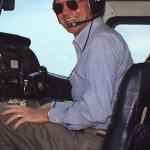
As we have occasionally in the past, we’ve opened up the WAC AirViews Blog to a guest blogger. Charles Lloyd, a loyal WAC member and contributor to both Cessna Pilot and Piper Pilot magazines, offers his take on refurbishing and updating owner-flown aircraft, a hot topic in the industry with the advent of so many high capability but lightweight and compact navigational and communication systems that can be easily retrofitted into older aircraft. In his blog entry below, Charles discusses how to acquire and modify a Cessna 172 or Cessna 182 to NextGen standards for $100,000 or $130,000.
How can you get a NextGen equipped 172 or 182 for that price. Today, a new Cessna 172 is $350,000 or 182 is $500,000. I did not say it is a new one. Thirteen years ago I bought a 1966 Cessna 182 for $50,000 and gradually over the next seven years added $50,000 in avionics upgrades to create a nice IFR flying machine. This Garmin based package includes dual Garmin GPS WAAS navigators, NEXRAD satellite weather, Stormscope, electric attitude indicator with 1-hour battery backup, single axis autopilot and no glass.
You can still use this approach today and meet the budget in the title. The assumptions are a late seventies aircraft with a King Silver Crown radio stack with a mid-time engine. Paint and interior are OK and you can live with what you see. The plan is to create a IFR package that you plan to fly for 10 years. This is not a fix up to sell and get rich scheme. NextGen is slowly coming alive and ADS-B is just around the corner in 2020. Garmin 430 and 530 GPS navigator are great but the manufacturer is committed to supporting these units 2021 period. Be careful on planning your approach around a 430/530 foundation.
If I did it today my plan would be slightly different. One GPS navigator either a GTN650 or 750 will be adequate. For the second NavCom, use the King KW155 with glide slope capability that was your number 1 unit. If you don’t have a KW155 then get your shop to find a good used unit. Narco Mark 12s or King 170B will not provide the reliability you will need for IFR reliability.
Garmin’s GDL 88 is a good price performer for ADS-B in and out. While the NEXR weather is not a crisp and the Sirrus MX weather, the price is right at no charge and you will receive traffic advisories from the UAT ground stations with your current Mode C transponder.
Finally, glass is here and proving is worth. Glass is more reliable with no moving mechanical parts. Aspen offer a modular one step at a time approach to the glass cockpit. Starting with the Evolution 1000 Pro PFD, you can add one or two additional MFD panels. Garmin’s 500 glass six pack is a all or nothing approach and is a bigger investment all at once versus the Aspen one step at a time method.
The S-TEC Cobham System 30 is a rate based two axis autopilot that is self contained in the turn coordinator, and my thirteen years experience with a slightly more expensive Model 40 is excellent. It works fine last a long time.
How do we mix and match the above overview. For the Skyhawk here are my recommendations. Start with a Garmin GNS 650 and move the King KW155 to the number 2 NavCom position. A PMA xx will slip into the King xx audio panel slot. Single pilot IFR in a GA aircraft is some of the highest workload flying there is. It is time for the S-Tec Model 30 autopilot installation. Add a Garmin GDL 88 to work with you King KT76A Mode C transponder for traffic and a weather data link. The final addition is an Aspen Evolution 1000 Pro PFD that adds solid state AHRS reliability for your glass ADI and HSI. How much will this cost? Working with Bevan Rebel’s Kent McIntyre the cost today for this package is $47,500. Add this to your $45,000 late 70’s Skyhawk and you have an aircraft equipped to fly you well into the future. Finally remember you don’t have to install this package all at one time. Get with a good shop and plan you approach to IFR flying to get a lot of bang for your buck.
For the Skylane, start with the big screen GTN 750 and move the King KW155 with glide slope to the number 2 position. Add the Midcontinent Lifesaver Electric ADI with one-hour battery backup. Everything else is the same at the Skyhawk.
November 28, 2012
 Since my youth, I’ve spent most Thanksgiving weekends either playing or watching football. This year was no exception. But, for some reason it seemed like the games I watched involved more fumbles than usual, including one miscue in the Michigan-Ohio State game that must have been touched by nearly every player on the field. The net result was that MIchigan ended up losing the ball, about 20 yards, and a late opportunity to score in a close game.
Since my youth, I’ve spent most Thanksgiving weekends either playing or watching football. This year was no exception. But, for some reason it seemed like the games I watched involved more fumbles than usual, including one miscue in the Michigan-Ohio State game that must have been touched by nearly every player on the field. The net result was that MIchigan ended up losing the ball, about 20 yards, and a late opportunity to score in a close game.
Unfortunately, the original miscue and subsequent mishandling of the football provides an all-too-apt metaphor for the “fumbled recovery” we’ve experienced in business aviation over the past few years. We haven’t generated much in the way of offense — or revenues — in the corporate aircraft segment of the industry since 2008 and it’s hard to relate to anyone who says the “Recovery” actually began in 2009. If that’s truly the case, why hasn’t anyone bothered to tell us Wichita. To us, it feels like we’re trying to run the ball against the 1985 Chicago Bears. And maybe that’s a big part of the problem–business aviation seems to be continually running up against “trash talkers” from Chicago–but these days they are more commonly known as the Obama Administration. The President and members of his cabinet and party have been invoking a class warfare campaign that involves vocal criticism of the “fat cats in their corporate jets” who they perceive aren’t paying their fair share. Their rhetorical blitzes have contributed to the sacking of a lot of pretty good players–around 13,000 in Wichita alone–and business aviation hasn’t really been able to get a firm grip on the situation , even three years into the so-called “recovery.” While it’s true that the number of certain, highly specialized jobs in Kansas has shown some minimal improvement over the past couple of years, the output of the state’s airplane manufacturers has been stagnant. In fact, one of the Air Capital of the World’s most venerable companies, Hawker Beechcraft, has declared bankruptcy and another icon, Boeing, has announced that it will close its Wichita facilities for good in 2014, eliminating, in one move, roughly the same number of jobs that those very selective re-hires have accounted for over the past two years. Even if Hawker Beechcraft–or as it now says it will be known when it emerges from Chapter 11–the Beechcraft Corporation, survives, it will apparently do so without it’s jet products. That means that it’s total employment will likely go down before–and if– it ever goes back up. HBC is currently completing a handful of jets for customers who haven’t cancelled their orders. Once those aircraft are delivered, the production lines will be shuttered and the workers assigned to those programs let go. At a press conference at the National Business Aviation Association (NBAA) Annual Meeting & Convention in Orlando last month, Hawker Beechcraft executives explained that they are continuing to “operate as normal” under debtor in possession circumstances while a new, amended recovery plan that doesn’t include acquisition of the company by Chinese investors, is reviewed by the Bankruptcy Court. But, it seems that recovery may be fumbled, too,. If the company’s total employment drops below a previously-agreed upon level of 3,600 people in Wichita, Beechcraft will lose the support of the state and local governments that have been subsidizing training and providing financial incentives. The latter will be subject to payback, too, at a time when the company is trying to define its ongoing market niche and placate hundreds of unhappy jet owners who feel disenfranchised because HBC also announced they will no longer honor the warranties or provide support for the Premier 1A or Hawker 4000 aircraft.
To make matters worse, one of the more resilient firms in Wichita’s aviation fraternity, Spirit AeroSystems has finally started to show signs of being impacted by the industry’s continued malaise. It recently reported a quarterly net loss of $134 million due to struggles with the development and early production on certain programs. Spirit, with its diverse product lines and solid business base in the commercial transport segment had, up to this point, managed to weather the fiscal storm, even as it dealt with significant damage to its physical facilities from a tornado in April of 2012. Now, even the strongest player on the field seems to limping along defensively as we await the next onslaught of offense from the Second Obama Administration. If harsh rhetoric, regulatory and taxation issues don’t jar Wichita’s planemakers too much, perhaps they’ll be able to put some points on the (order) board and put some players back into the game. Some analysts are even cautiously optimistic. But the resurrected threat of user fees, the continued characterization of corporate airplane operators as evil or greedy, and the willingness on the part of government to allow our previously unchallenged leadership in innovation and aircraft production to migrate offshore could undercut any potential trend towards a measurable recovery. If the hopeful signs of the past couple of years again turn out to be fakes, Wichita’s aviation community could end up stalled in the shadow of its own goalposts again in 2013. That’s always a bad place for another fumble!
September 21, 2012
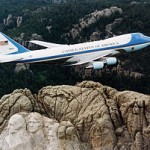 As Published In The September issue of PROFESSIONAL PILOT
As Published In The September issue of PROFESSIONAL PILOT
My friend Jack Pelton, retired Chairman, President and CEO of Cessna, recently suggested that it would be appropriate and prudent to re-insert the wording originally included in the Federal Aviation Act of 1958 defining one of the FAA’s duties as the “promotion, encouragement and development of civil aeronautics” into the FAA Charter. It was expunged as part of the 1996 reauthorization bill. Now, more than ever, I couldn’t agree with him more. This important segment of the industry has been the target of almost constant negativity from politicians for the past three years and that vitriol is likely to increase as the political campaign season nears conclusion. Keep reading >
August 2, 2012
The recently concluded EAA AirVenture in Oshkosh, Wisconsin is an amazing event. It brings everyone from kids whose interests are just being peaked by building model airplanes to high government officials such as the Federal Aviation Administrator to the same place at the same time to observe–and revel in all things aeronautical. This year, attendance once again topped half a million visitors, transforming the scenic and hospitable little town of Oshkosh (population 67,000 for 50 weeks of the year) into a major metropolis and the control tower at Wittman Airport into the busiest in the world. Keep reading >


